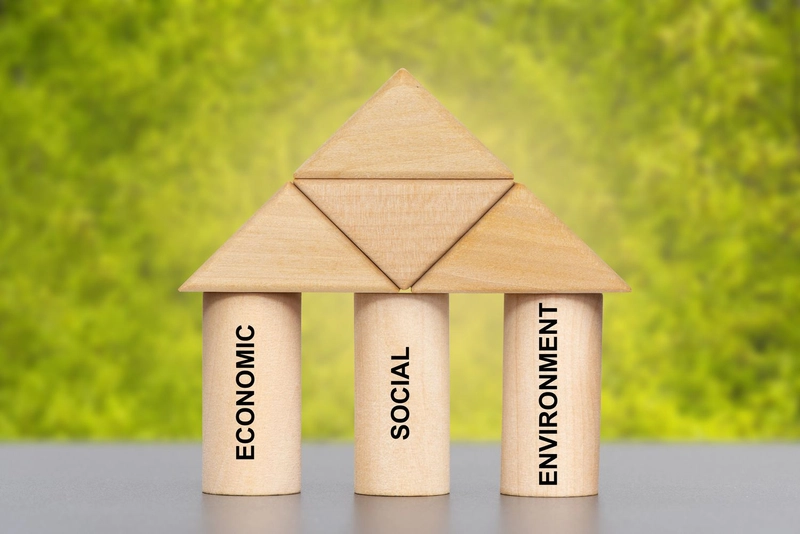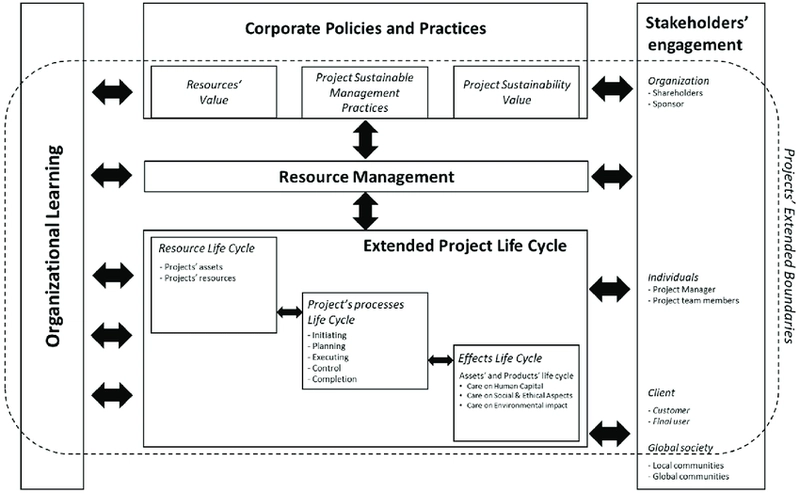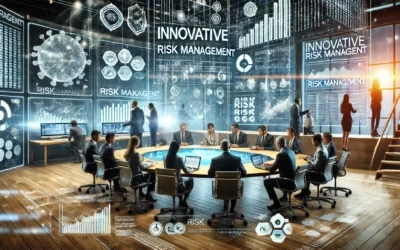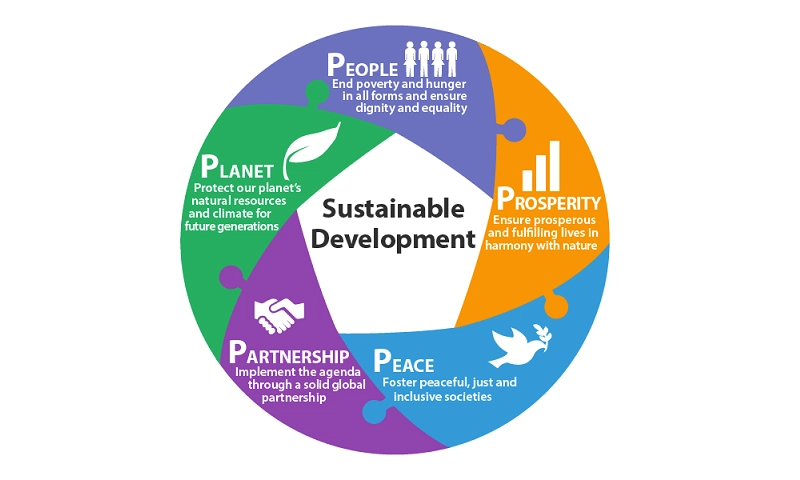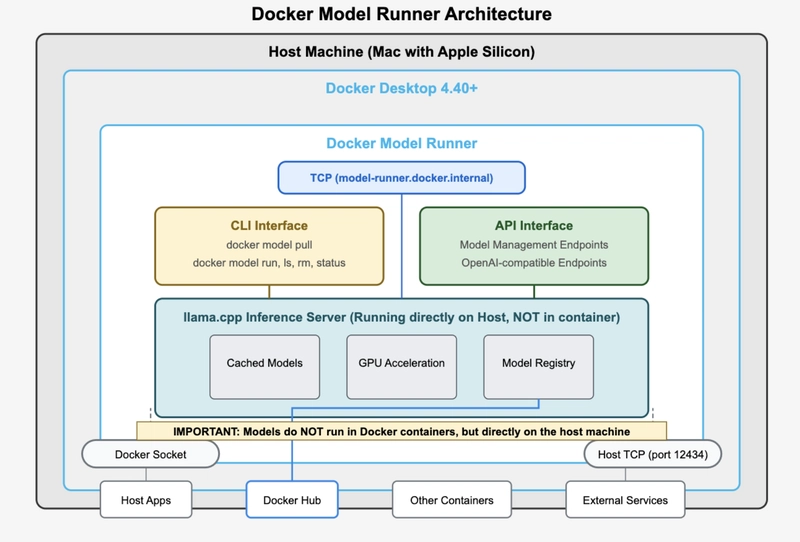The Rise of Sustainability-Focused Project Management in Tech
Introduction As we navigate 2025, sustainability has evolved from a buzzword to a critical business imperative, especially in the tech industry. Development teams are increasingly finding themselves at the intersection of innovation and environmental responsibility, with project management practices transforming to accommodate this shift. This evolution isn't just about reducing carbon footprints—it's about reimagining how we build, deploy, and maintain technology solutions in ways that benefit our planet, people, and profits. Why Sustainability Matters in Tech Project Management The tech sector accounts for significant global energy consumption and electronic waste. As developers and project managers, we have a unique opportunity to drive positive change through more sustainable practices. Beyond environmental benefits, sustainable project management delivers tangible advantages: Enhanced resource efficiency leading to cost savings Improved stakeholder engagement and team morale Reduced regulatory risks as environmental legislation tightens Increased innovation through constraints that drive creative solutions Better alignment with client and user values According to recent trends, organizations implementing sustainability-focused project management report 28% faster project delivery times and 42% lower overhead costs. This demonstrates that sustainability and efficiency can go hand-in-hand when properly integrated into project workflows. The Three Pillars of Sustainable Project Management Sustainable project management rests on three interconnected foundations that should be considered throughout the development lifecycle: Environmental Sustainability This pillar focuses on minimizing negative impacts on the natural world through: Reducing the carbon footprint of development environments and deploying solutions Conserving resources through efficient code, infrastructure, and processes Implementing waste reduction strategies in both digital and physical aspects of projects For development teams, this might mean optimizing code for energy efficiency, selecting cloud providers with renewable energy commitments, or designing applications that require less computing power. Social Sustainability The social dimension ensures projects positively impact people and communities by: Engaging all stakeholders in decision-making processes Implementing ethical labor practices throughout the development lifecycle Creating positive outcomes for users and communities affected by technology In practice, this could involve designing accessible applications, ensuring diverse representation in AI training data, or considering the social implications of features you build. Economic Sustainability This aspect ensures long-term financial viability while creating value through: Focusing on long-term ROI rather than just immediate gains Implementing cost-effective solutions that don't sacrifice quality Developing comprehensive risk management strategies For tech teams, economic sustainability might mean building modular, maintainable code that reduces technical debt or designing systems that scale efficiently to minimize future costs. Integrating Sustainability into Tech Project Workflows Project Initiation Phase The foundation for sustainability begins at project inception: Define clear sustainability objectives in your project charter Conduct stakeholder analysis to understand sustainability expectations Establish baseline metrics for measuring environmental impact Using a platform like Teamcamp during this phase helps teams centralize sustainability goals alongside other project objectives. The unified project dashboard allows for tracking environmental KPIs alongside traditional metrics, ensuring sustainability doesn't become siloed from main project goals. Planning Phase During planning, sustainability considerations should be woven into every aspect: Implement sustainable procurement strategies for hardware, software, and services Conduct sustainability risk assessments to identify potential issues Design with lifecycle thinking to consider long-term impacts Teamcamp's milestone and deadline-tracking features help teams break down sustainability initiatives into manageable tasks with clear ownership and timelines. This visibility ensures environmental considerations don't get deprioritized during development sprints. Execution Phase As development progresses, teams should: Monitor resource consumption of development environments Implement energy-efficient coding practices Regularly review sustainability metrics alongside other project KPIs Teamcamp's real-time collaboration tools reduce the need for resource-intensive meetings while keeping everyone aligned on sustainability goals. The platform's time tracking capabilities also help teams identify inefficient pr
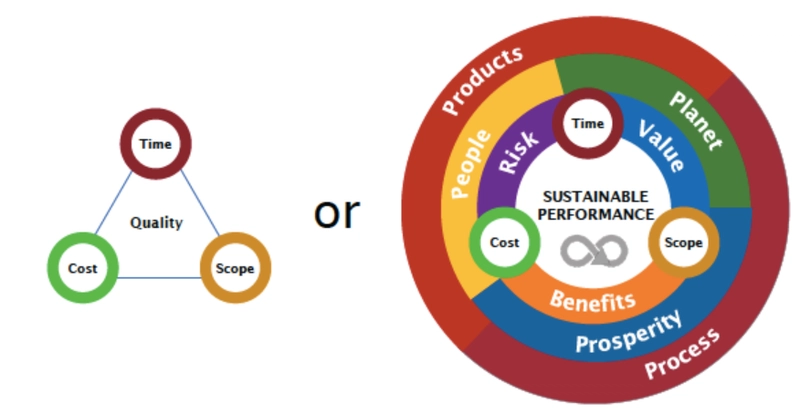
Introduction
As we navigate 2025, sustainability has evolved from a buzzword to a critical business imperative, especially in the tech industry.
Development teams are increasingly finding themselves at the intersection of innovation and environmental responsibility, with project management practices transforming to accommodate this shift. This evolution isn't just about reducing carbon footprints—it's about reimagining how we build, deploy, and maintain technology solutions in ways that benefit our planet, people, and profits.
Why Sustainability Matters in Tech Project Management
The tech sector accounts for significant global energy consumption and electronic waste. As developers and project managers, we have a unique opportunity to drive positive change through more sustainable practices. Beyond environmental benefits, sustainable project management delivers tangible advantages:
- Enhanced resource efficiency leading to cost savings
- Improved stakeholder engagement and team morale
- Reduced regulatory risks as environmental legislation tightens
- Increased innovation through constraints that drive creative solutions
- Better alignment with client and user values
According to recent trends, organizations implementing sustainability-focused project management report 28% faster project delivery times and 42% lower overhead costs. This demonstrates that sustainability and efficiency can go hand-in-hand when properly integrated into project workflows.
The Three Pillars of Sustainable Project Management
Sustainable project management rests on three interconnected foundations that should be considered throughout the development lifecycle:
Environmental Sustainability
This pillar focuses on minimizing negative impacts on the natural world through:
- Reducing the carbon footprint of development environments and deploying solutions
- Conserving resources through efficient code, infrastructure, and processes
- Implementing waste reduction strategies in both digital and physical aspects of projects
For development teams, this might mean optimizing code for energy efficiency, selecting cloud providers with renewable energy commitments, or designing applications that require less computing power.
Social Sustainability
The social dimension ensures projects positively impact people and communities by:
- Engaging all stakeholders in decision-making processes
- Implementing ethical labor practices throughout the development lifecycle
- Creating positive outcomes for users and communities affected by technology
In practice, this could involve designing accessible applications, ensuring diverse representation in AI training data, or considering the social implications of features you build.
Economic Sustainability
This aspect ensures long-term financial viability while creating value through:
- Focusing on long-term ROI rather than just immediate gains
- Implementing cost-effective solutions that don't sacrifice quality
- Developing comprehensive risk management strategies
For tech teams, economic sustainability might mean building modular, maintainable code that reduces technical debt or designing systems that scale efficiently to minimize future costs.
Integrating Sustainability into Tech Project Workflows
Project Initiation Phase
The foundation for sustainability begins at project inception:
- Define clear sustainability objectives in your project charter
- Conduct stakeholder analysis to understand sustainability expectations
- Establish baseline metrics for measuring environmental impact
Using a platform like Teamcamp during this phase helps teams centralize sustainability goals alongside other project objectives. The unified project dashboard allows for tracking environmental KPIs alongside traditional metrics, ensuring sustainability doesn't become siloed from main project goals.
Planning Phase
During planning, sustainability considerations should be woven into every aspect:
- Implement sustainable procurement strategies for hardware, software, and services
- Conduct sustainability risk assessments to identify potential issues
- Design with lifecycle thinking to consider long-term impacts
Teamcamp's milestone and deadline-tracking features help teams break down sustainability initiatives into manageable tasks with clear ownership and timelines. This visibility ensures environmental considerations don't get deprioritized during development sprints.
Execution Phase
As development progresses, teams should:
- Monitor resource consumption of development environments
- Implement energy-efficient coding practices
- Regularly review sustainability metrics alongside other project KPIs
Teamcamp's real-time collaboration tools reduce the need for resource-intensive meetings while keeping everyone aligned on sustainability goals. The platform's time tracking capabilities also help teams identify inefficient processes that waste both time and energy.
Closing Phase
Project completion should include:
- Measuring final sustainability metrics against initial goals
- Documenting lessons learned for future projects
- Planning for sustainable maintenance of the delivered solution
Emerging Technologies Driving Sustainable Project Management
Several technological advancements are revolutionizing how teams approach sustainability in project management:
AI and Machine Learning
AI is taking center stage in sustainable project management by:
- Optimizing resource allocation to reduce waste
- Enhancing risk management through predictive analytics
- Streamlining scheduling to improve efficiency
Teamcamp's AI-driven task management features help teams prioritize work intelligently, ensuring resources are allocated efficiently while reducing unnecessary digital waste.
Blockchain for Transparency
Blockchain technology is enabling:
- Transparent supply chains for hardware and software components
- Verification of sustainability credentials
- Secure, immutable records of environmental performance
IoT and Advanced Analytics
Connected devices and analytics are improving sustainability through:
- Real-time monitoring of resource consumption
- Data-driven decision-making for environmental impact
- Predictive maintenance to extend hardware lifecycles
Practical Implementation Strategies for Dev Teams
1. Adopt Integrated Project Management Tools
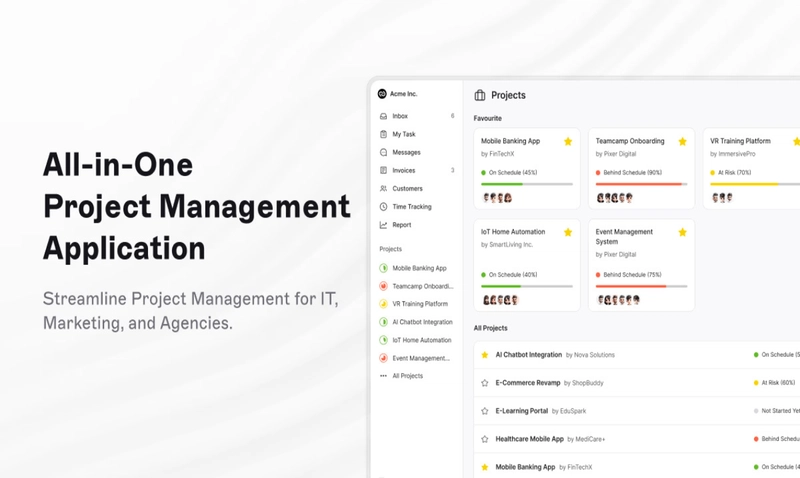
Platforms like Teamcamp provide the infrastructure needed to implement sustainable practices effectively. With features like unified project dashboards, milestone tracking, and real-time collaboration, teams can integrate sustainability considerations into every development aspect.
Organizations using Teamcamp report significant improvements in project outcomes, including a 32% reduction in administrative work and a 28% faster project delivery. These efficiency gains directly translate to reduced resource consumption and more sustainable operations.
Build Sustainably with Teamcamp
2. Implement Sustainable Coding Practices
- Optimize algorithms for energy efficiency
- Reduce unnecessary data processing and storage
- Design applications with lower hardware requirements
- Implement caching strategies to minimize redundant operations
3. Leverage Cloud Resources Responsibly
- Select cloud providers with strong environmental commitments
- Right-size instances to avoid over-provisioning
- Implement auto-scaling to match actual demand
- Schedule non-critical workloads during renewable energy peaks
4. Measure and Monitor Environmental Impact
- Track energy consumption of development environments
- Monitor the carbon footprint of deployed applications
- Set progressive reduction targets for each project
- Share sustainability metrics with stakeholders regularly
Teamcamp's reporting capabilities make it easy to track these metrics alongside traditional project KPIs, providing a holistic view of project performance.
Overcoming Common Challenges
Implementing sustainability-focused project management isn't without obstacles. Here are strategies to address common challenges:
Balancing Sustainability with Delivery Timelines
- Integrate sustainability considerations from day one rather than adding them later
- Use Teamcamp's task prioritization tools to ensure sustainability tasks are properly weighted
- Implement incremental improvements rather than attempting complete transformations
Measuring Environmental Impact
- Start with simple metrics like energy consumption
- Gradually introduce more sophisticated measurements
- Leverage Teamcamp's custom task status options to track sustainability milestones
Securing Stakeholder Buy-in
- Highlight the business case for sustainability, including cost savings
- Share success stories and case studies from similar projects
- Use Teamcamp's client portal to keep stakeholders informed of sustainability progress
Conclusion: The Future of Sustainable Tech Project Management
As we look toward the future, sustainability in tech project management will only grow in importance. The integration of AI, blockchain, and advanced analytics will continue to enhance our ability to build technology solutions that benefit both users and the planet.
By adopting platforms like Teamcamp that support collaborative, transparent, and efficient project management, development teams can position themselves at the forefront of this important shift. The unified project dashboard, milestone tracking, and real-time collaboration features provide the foundation to integrate sustainability into every aspect of the development lifecycle.
The most successful tech teams of tomorrow will be those that embrace sustainability not as a separate initiative but as a core part of how they approach project management. By starting today, you can ensure your team is ready for the sustainable future of tech.
Ready to transform your approach to project management? Explore how Teamcamp can help your team build more sustainable technology solutions while improving efficiency and collaboration. Your journey toward more sustainable development practices starts with the right tools and mindset.












































































































































































![[The AI Show Episode 142]: ChatGPT’s New Image Generator, Studio Ghibli Craze and Backlash, Gemini 2.5, OpenAI Academy, 4o Updates, Vibe Marketing & xAI Acquires X](https://www.marketingaiinstitute.com/hubfs/ep%20142%20cover.png)



























































































































![[DEALS] The Premium Learn to Code Certification Bundle (97% off) & Other Deals Up To 98% Off – Offers End Soon!](https://www.javacodegeeks.com/wp-content/uploads/2012/12/jcg-logo.jpg)


![From drop-out to software architect with Jason Lengstorf [Podcast #167]](https://cdn.hashnode.com/res/hashnode/image/upload/v1743796461357/f3d19cd7-e6f5-4d7c-8bfc-eb974bc8da68.png?#)








































































































.png?#)

































_Christophe_Coat_Alamy.jpg?#)
 (1).webp?#)





































































































![Apple Considers Delaying Smart Home Hub Until 2026 [Gurman]](https://www.iclarified.com/images/news/96946/96946/96946-640.jpg)
![iPhone 17 Pro Won't Feature Two-Toned Back [Gurman]](https://www.iclarified.com/images/news/96944/96944/96944-640.jpg)
![Tariffs Threaten Apple's $999 iPhone Price Point in the U.S. [Gurman]](https://www.iclarified.com/images/news/96943/96943/96943-640.jpg)

































































































































